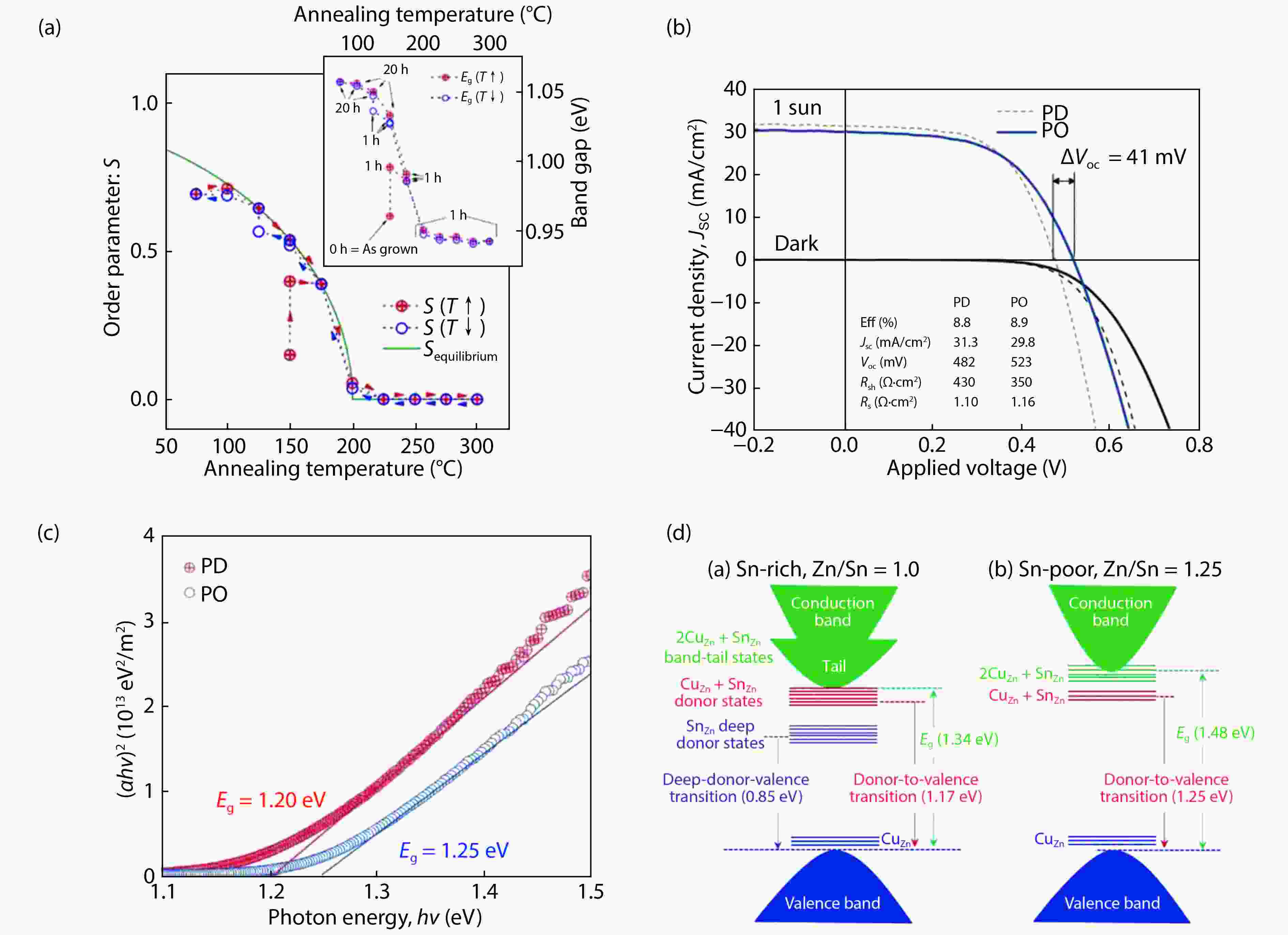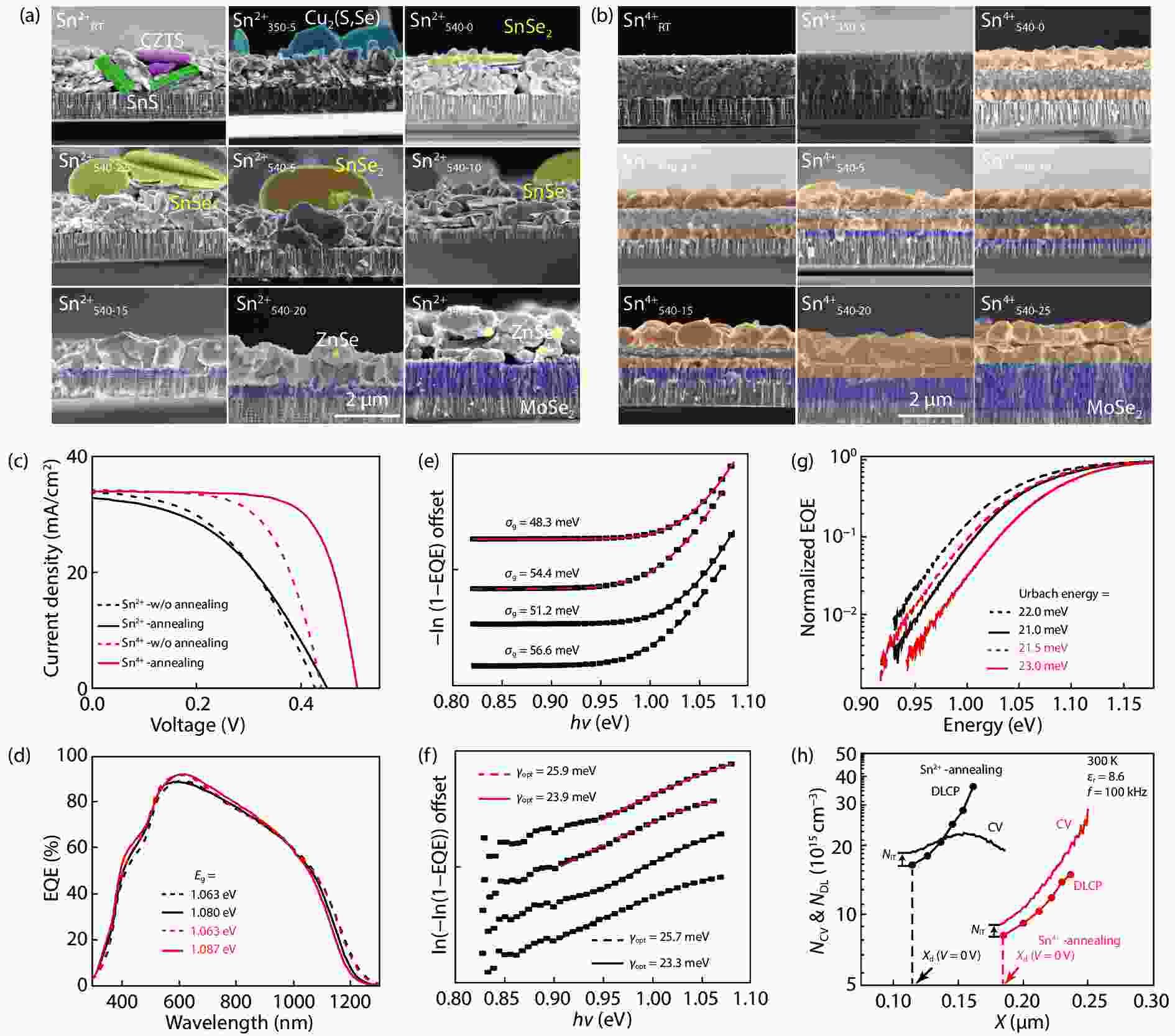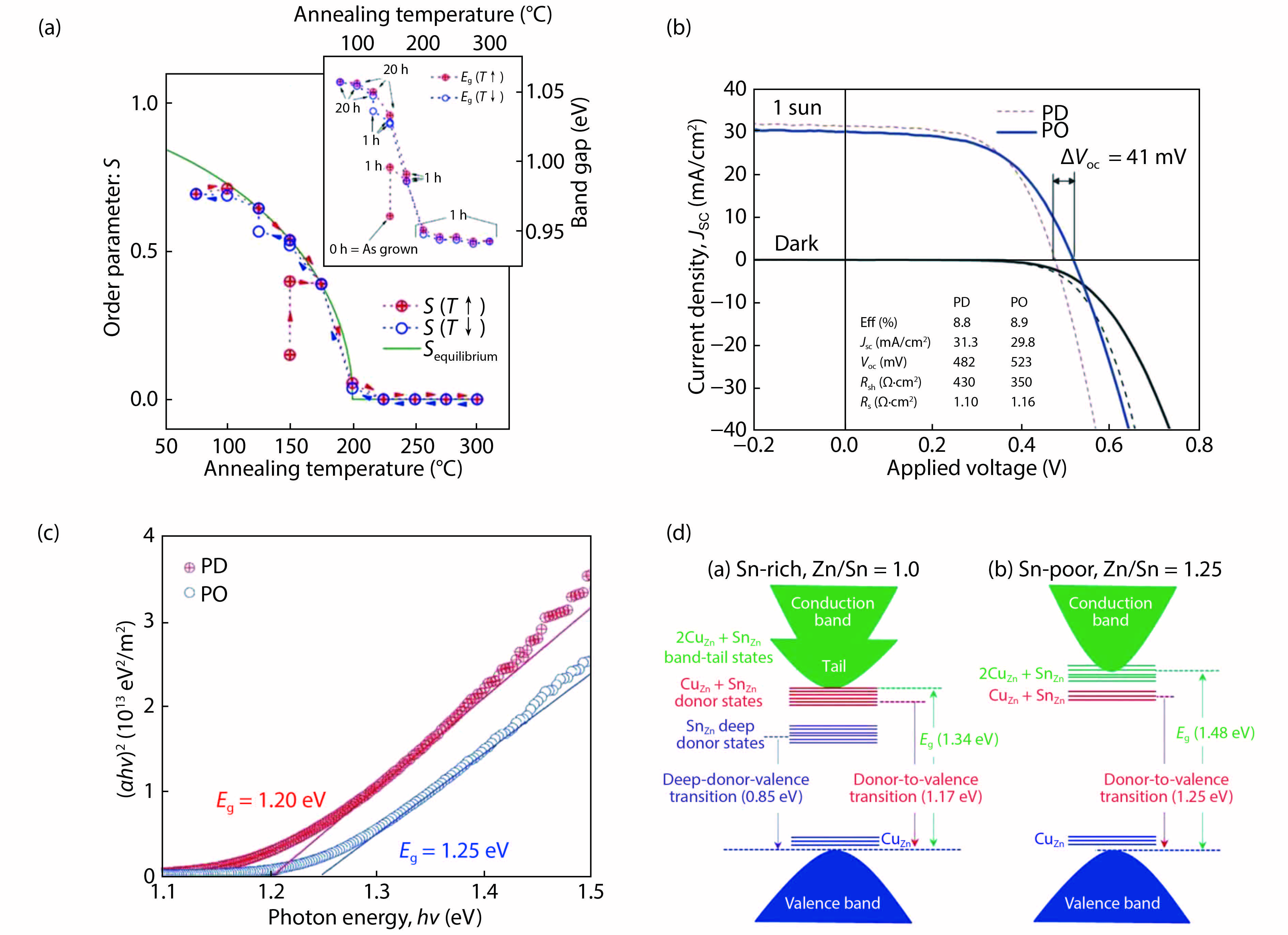| Citation: |
Yuancai Gong, Hao Xin, Liming Ding. Voc deficit in kesterite solar cells[J]. Journal of Semiconductors, 2021, 42(10): 100201. doi: 10.1088/1674-4926/42/10/100201
Y C Gong, H Xin, L M Ding, Voc deficit in kesterite solar cells[J]. J. Semicond., 2021, 42(10): 100201. doi: 10.1088/1674-4926/42/10/100201.
Export: BibTex EndNote
|
-
References
[1] Wang W, Winkler M T, Gunawan O, et al. Device characteristics of CZTSSe thin-film solar cells with 12.6% efficiency. Adv Energy Mater, 2014, 4, 1301465 doi: 10.1002/aenm.201301465[2] Son D H, Kim S H, Kim S Y, et al. Effect of solid-H2S gas reactions on CZTSSe thin film growth and photovoltaic properties of a 12.62% efficiency device. J Mater Chem A, 2019, 7, 25279 doi: 10.1039/C9TA08310C[3] Nakamura M, Yamaguchi K, Kimoto Y, et al. Cd-free Cu(In,Ga)(Se,S)2 thin-film solar cell with record efficiency of 23.35%. IEEE J Photovolt, 2019, 9, 1863 doi: 10.1109/JPHOTOV.2019.2937218[4] Fonoll-Rubio R, Andrade-Arvizu J, Blanco-Portals J, et al. Insights into interface and bulk defects in a high efficiency kesterite-based device. Energy Environ Sci, 2021, 14, 507 doi: 10.1039/D0EE02004D[5] Chen S, Walsh A, Gong X G, et al. Classification of lattice defects in the kesterite Cu2ZnSnS4 and Cu2ZnSnSe4 earth-abundant solar cell absorbers. Adv Mater, 2013, 25, 1522 doi: 10.1002/adma.201203146[6] Giraldo S, Jehl Z, Placidi M, et al. Progress and perspectives of thin film kesterite photovoltaic technology: A critical review. Adv Mater, 2019, 31, 1806692 doi: 10.1002/adma.201806692[7] Tian Q, Liu S. Defect suppression in multinary chalcogenide photovoltaic materials derived from kesterite: progress and outlook. J Mater Chem A, 2020, 8, 24920 doi: 10.1039/D0TA08202C[8] Kim S, Park J S, Walsh A. Identification of killer defects in kesterite thin-film solar cells. ACS Energy Lett, 2018, 3, 496 doi: 10.1021/acsenergylett.7b01313[9] Rey G, Larramona G, Bourdais S, et al. On the origin of band-tails in kesterite. Sol Energy Mater Sol Cells, 2018, 179, 142 doi: 10.1016/j.solmat.2017.11.005[10] Crovetto A, Kim S, Fischer M, et al. Assessing the defect tolerance of kesterite-inspired solar absorbers. Energy Environ Sci, 2020, 13, 3489 doi: 10.1039/D0EE02177F[11] Rey G, Redinger A, Sendler J, et al. The band gap of Cu2ZnSnSe4: Effect of order-disorder. Appl Phys Lett, 2014, 105, 112106 doi: 10.1063/1.4896315[12] Bourdais S, Chone C, Delatouche B, et al. Is the Cu/Zn disorder the main culprit for the voltage deficit in kesterite solar cells. Adv Energy Mater, 2016, 6, 1502276 doi: 10.1002/aenm.201502276[13] Ma S, Li H, Hong J, et al. Origin of band-tail and deep-donor states in Cu2ZnSnS4 solar cells and their suppression through Sn-poor composition. J Phys Chem Lett, 2019, 10, 7929 doi: 10.1021/acs.jpclett.9b03227[14] Gong Y, Zhang Y, Jedlicka E, et al. Sn4+ precursor enables 12.4% efficient kesterite solar cell from DMSO solution with open circuit voltage deficit below 0.30 V. Sci China Mater, 2021, 64, 52 doi: 10.1007/s40843-020-1408-x[15] Gong Y, Zhang Y, Zhu Q, et al. Identify the origin of the Voc deficit of kesterite solar cells from the two grain growth mechanisms induced by Sn2+ and Sn4+ precursors in DMSO solution. Energy Environ Sci, 2021, 14, 2369 doi: 10.1039/D0EE03702H -
Proportional views






 DownLoad:
DownLoad:
















